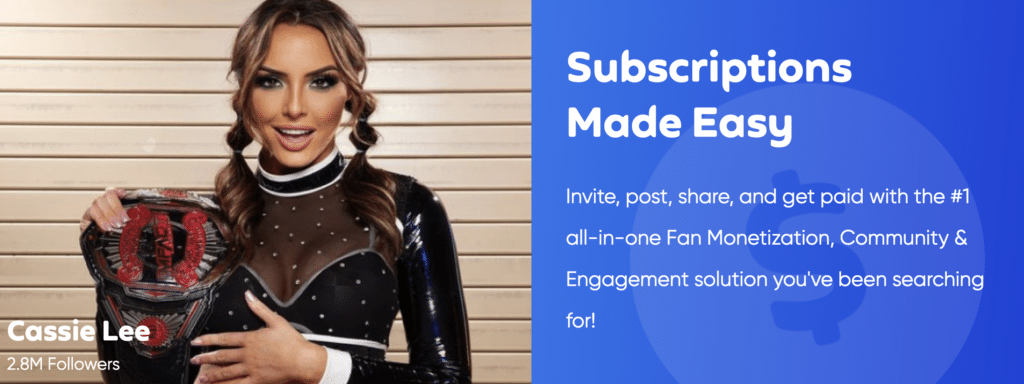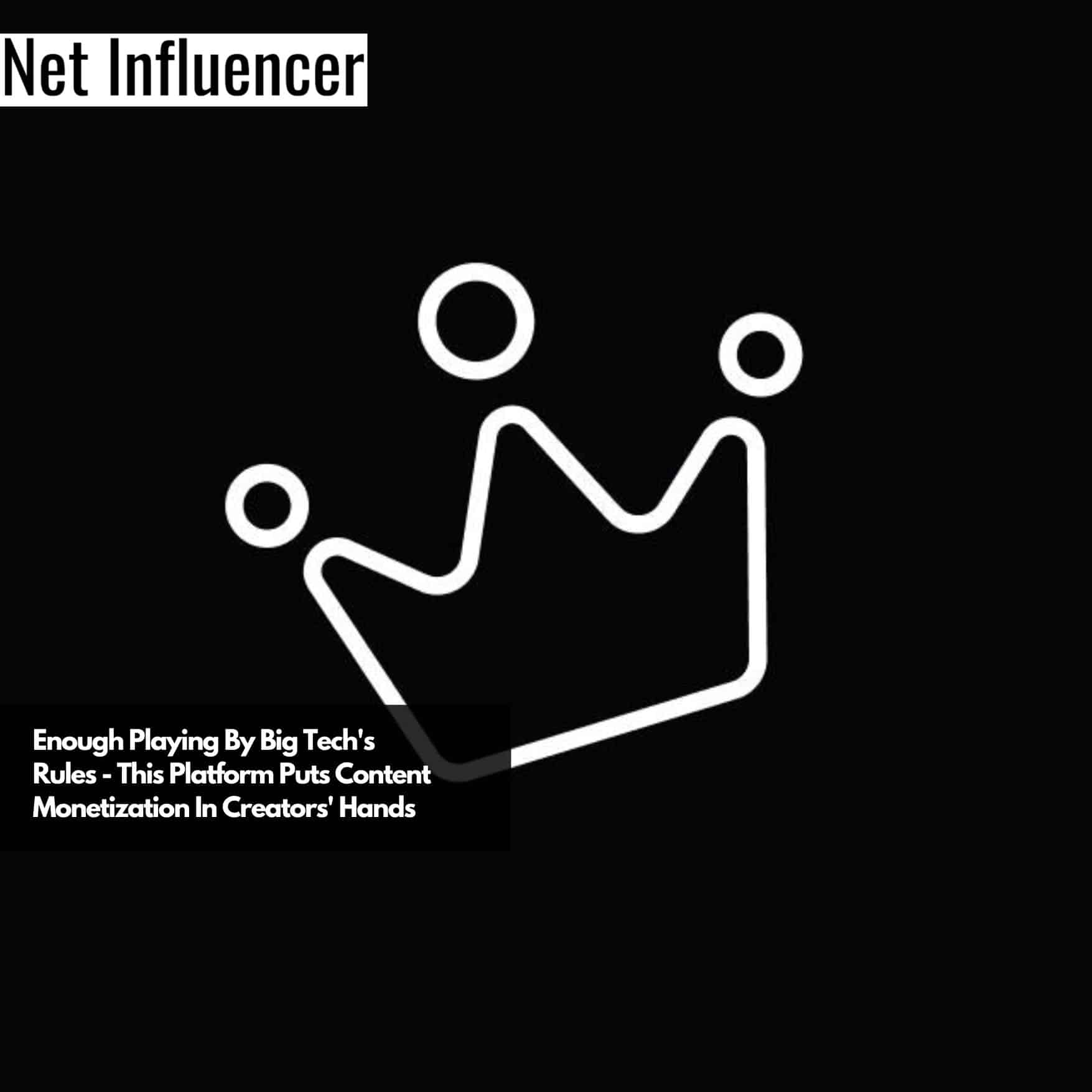Technology
Enough Playing By Big Tech’s Rules – This Platform Puts Content Monetization In Creators’ Hands
BrandArmy, based in Los Angeles, a new platform aiming to upend the creator economy, is empowering social media internet personalities, aka influencers and creators, to directly control and monetize their social followings. The company, cofounded by former creator Ramon Mendez, allows creators and influencers to consolidate and funnel their fragmented social media audiences across various platforms into one centralized community platform under their control.

Creators can then monetize premium content like photos, videos and audio directly to their communities through mass messaging tools – bypassing ad revenue sharing with social giants. Mendez cites examples of creators supplementing incomes or funding critical expenses through Brand Army’s model.
“The creator is the brand, the creator is the business, and their army is their social media audience and most loyal and engaged community,” says Ramon Mendez, CEO and cofounder of BrandArmy. “The idea is to bring these two parties, the creators and their audience, closer digitally than ever before.”
The platform allows creators to consolidate their fragmented followings from disparate social networks into one centralized community platform. This gives them ownership over reach, pricing, data, and community and the ability to directly monetize content like photos, videos, audio, and PDFs through mass direct messaging tools.

“If I’m a creator, I probably have a fragmented fandom across TikTok, Instagram, Facebook, TikTok, Snapchat, etc.,” Mendez explains. “I own nothing – I’m purely renting my audience from all of these different platforms. Brand Army changes that. We allow creators to invite their people over and get first-party data like emails, names, and phone numbers. For the first time creators literally can know their audience – something previously unheard of in the full history of social media platforms.”
Mendez speaks from personal experience as a former professional photographer who rose to fame on Myspace in the early days of social media. “Back then, I was directly monetizing my social media audience off-platform in different ways,” he says. “But that insight really led me to understand the difficulty of monetization on the big platforms.”

This first-hand struggle of trying to convert an online following into revenue became the driving force behind BrandArmy. “As a former creator that lived through all of this, I just have a unique understanding of why somebody would want to take an audience that they have developed over the years and have the opportunity to directly own and financially benefit on their own terms from that audience,” Mendez states. “Which is very different from what we experience on the big social media platforms where the creators are really just there for the betterment of the advertiser.”
Mendez contrasts Brand Army as “the antithesis of the big platform” where “the creator is the boss” rather than being beholden to the interests of advertisers. He emphasizes that “everything we do is from the point of view of the creator” including an iterative process of incorporating user feedback to continuously improve the product.
At its core, the company is on a mission to transform the creator economy. “The whole platform was built literally with the genesis of empowering the creator,” Mendez declares. “We are here to make these creators money with the goal of the platform to produce the highest average sales/revenue per channel, per creator. To accomplish this you need robust monetization and engagement tools which is how creators have made millions of dollars on BrandArmy”
Moving from Beta to Public Launch
As BrandArmy prepares to publicly launch in late May 2024, after operating in beta, one of the biggest challenges is driving widespread adoption among creators and their communities. Mendez acknowledges this requires fundamental shifts in behavior compared to how people engage and interact on traditional social media platforms.
“I think it’s important to make things just dead simple for the creator,” Mendez states. “When we started BrandArmy in beta, we created all of the major areas a creator would use that they are already familiar with on the big social platforms – like a feed for posts, direct messaging, going live, etc.”
The key difference, he explains, is that “with the main platforms, the creator always just goes to social media, opens up a free account day one. Day one is the great equalizer – they have no idea what’s going to happen.” It’s an exploratory journey of potentially going viral or slowly building an audience over time.
“With BrandArmy, it is very different,” Mendez contrasts. “You’re having to create a subscription tier – what do I call that? What price point? What benefits for each tier? How often should I post? Should I have a paid tier, a free tier or both? There’s all these behavioral, material changes very different from what they’re used to on ‘free’ social media platforms.”
To ease creators and audiences into this new paradigm, BrandArmy intentionally kept the initial beta experience simple and familiar. “For my brain, it made sense to keep it very simple and work on the behavior first,” Mendez explains. “Because if you can’t do that, all the other things won’t even really matter.”

He emphasizes that the first key behavior is for creators to successfully migrate their existing audiences to BrandArmy’s platform – something they’ve never had to do or think about before. Then those audiences must adapt to the new behavior of potentially paying for subscription or content, rather than consuming it for free as they do on social media.
“The audience has to now alter their behavior – they’re often not on any audience-monetization platform, and not parting with their money in financial support of their favorite creator or influencer,” Mendez says. “You have to give these audiences time to come in and kick the tires.”
BrandArmy accounts for this transition with a free subscription tier to allow fans to explore the platform’s offerings before committing funds. “They don’t know if that creator is going to be there for a while, what they’re going to do, they have no idea,” Mendez says. “So there’s two behavioral changes that are material that are converging in a way they’ve never done before.”
The focus during the beta period has been squarely on initiating those behavioral shifts and smoothing the audience migration process. “That’s been the focus – the behavior, the audience migration, the journey of the subscriber, and of course the creator once they are onboard,” Mendez states.
He acknowledges that while creators excel at operating on social media, they often have limited experience as business owners. “The creator is really great at what they’re doing on social media, but they’re not a business owner. They’ve not really thought about selling content, subscriptions, feeds or anything like that.”
A New Path for Monetization
According to Mendez, creators are facing significant headwinds in today’s challenging economic environment, especially those reliant on brand partnerships for income. “When you have a poor macro environment, it basically means for a lot of these creators that rely on brand deals, there’s not going to be as many brand deals,” he says. “And then pricing will be depressed or lower than it would normally be whenever they do get brand deals.”
Beyond economic pressures, Mendez points to the lack of control creators have on major platforms as an ongoing issue. “Because creators are never in the driver’s seat on the big platforms, it’s tough because basically they live a reactionary lifestyle,” he states. “The algorithm can change at any time…and the creators have to go try to figure it out and tweak this and tweak that.”
The brand partnership landscape also creates confusion with hundreds of companies connecting creators and brands. “It makes it very difficult for a creator, certainly the smaller ones, to know what’s real, what’s not real, what am I going to get paid?” Mendez says. “The landscape is just very murky, very difficult to navigate because you’ve got so many options.”
He expects consolidation eventually as “there’s only a finite number of ways that creators can actually make money.” In the meantime, Brand Army aims to provide an alternative revenue stream by allowing creators to monetize their audiences directly.
“We’re here to say, ‘Hey, we’re another option that you can now take this audience that you’ve built up and now on your own terms, start making money today,'” Mendez states. “With an infinitesimally small percentage of your audience, you can make as much, if not more money than what you make on your brand deals and monetization on the big platforms.”
He cites multiple examples of creators finding success and supplemental income through Brand Army. One is a woman who used earnings from the platform to pay for critical out-of-network surgery to treat a severe case of endometriosis.
“Because of BrandArmy, she was able to get surgery done infinitely faster…The best doctor was in New York (she resides in Los Angeles) out of network, so everything had to be paid cash,” Mendez explains. “But because of BrandArmy, she was able to accelerate when that surgery could actually happen.”
Another creator who joined in April 2023 has already generated nearly $1 million in sales through the end of the year. “She made 4 or 5 times more in her first month than she ever made on a competing platform she came from,” Mendez shares. “She’s now been able to buy a car and financially support this journey of her becoming a creator and an actress – acting classes are expensive, and it just goes on and on.”
Advice for Aspiring Creators From Ramon Mendez
For those just starting out on their creator journey, Mendez has straightforward advice: obsessively study and iterate on the major social platforms to master growth and audience building.
“Take the advice of somebody like Mr. Beast – he wasn’t a success overnight, but after hundreds and hundreds of hours of obsessing, he improved and iterated to get better,” Mendez counsels.
He advocates taking a detail-oriented approach when attacking a new platform, experimenting with every variable from thumbnails to caption length to video structure. “All of those iterations will create different results,” Mendez says. “A creator should first learn the lay of the land of the big social media platforms, because effectively those become your growth channels for something like Brand Army.”
Mendez stresses aspiring pros should quite literally study and follow the rulebook on each platform. “If you’re going to be a pro, you really need to be an expert on every different platform’s terms of service guidelines, the rules, what you can and cannot do,” he states. “And then to stay within those rules.”
While creators have no control over the platform policies, Mendez believes diligently understanding and operating within their parameters is essential. “The rules are there for a lot of different reasons, and the different platforms have their own nuances,” he explains.
His overarching guidance is to fully immerse yourself in whichever platforms you pursue. “Lean in on whatever platform you want and learn, learn, learn,” Mendez advises. “And then from there, something like Patreon, OnlyFans or BrandArmy becomes available to you.”
At the end of the day, Mendez believes there are no shortcuts – audience growth and creator success boils down to relentless effort. “It’s the only way that I know to do anything – work your ass off and learn and figure it out and get better.”
For those willing to put in the grinding hours, identify growth hacks through meticulous experimentation, and stay educated on platform policies, Mendez sees viable pathways to graduating from social media audience building to more sustainable direct monetization opportunities like BrandArmy.
But first, creators must establish themselves and their experience. As Mendez states: “Act like a pro. A pro is going to go through every word on all their guidelines, all the terms of service, study how others are finding success, and then get to work.”



















